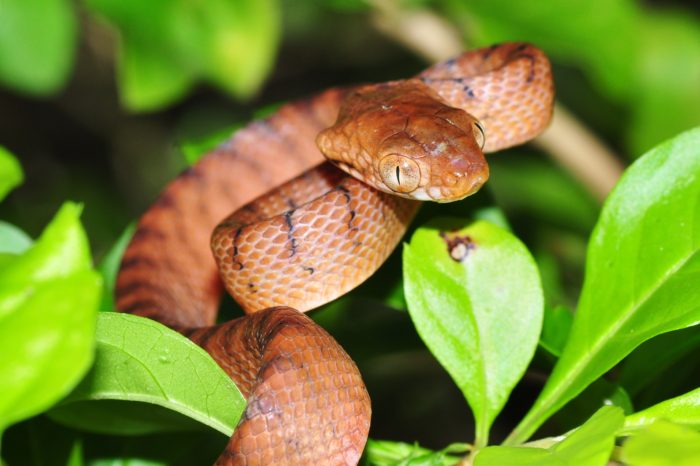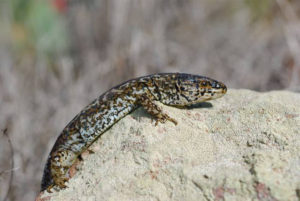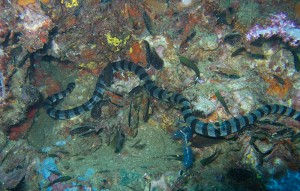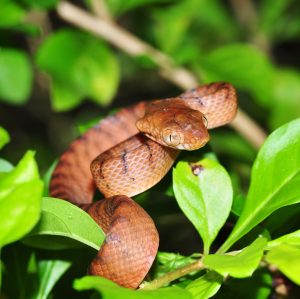Snakes on a Plane
Researchers have discovered why the brown tree snake has become such a successful invasive species on the island of Guam, where it has devastated native bird populations.
 Image: Pavel Kirillov from St.Petersburg, Russia [CC BY-SA 2.0 (https://creativecommons.org/licenses/by-sa/2.0)], via Wikimedia Commons
Image: Pavel Kirillov from St.Petersburg, Russia [CC BY-SA 2.0 (https://creativecommons.org/licenses/by-sa/2.0)], via Wikimedia Commons A team of international scientists has discovered why brown tree snakes have become one of the most successful invasive species.
The research team, led by University of Queensland scientists, has been studying why this species, a type of cat-eyed snake, has been so effective at devastating native bird populations on the island of Guam. Their results were published in the Journal of Molecular Evolution.
The brown tree snake is native to eastern and northern coastal Australia, eastern Indonesia, Papua New Guinea, and a large number of islands in northwestern Melanesia. This one species has caused the local extinction of most of the Guam’s native bird and lizard species. It also caused ‘cascading’ ecological effects by removing native pollinators, causing the subsequent decline of native plant species.
Associate Professor Bryan Fry from the university’s School of Biological Sciences said the takeover of Guam began when the brown tree snake was introduced on the Pacific island during World War II.
“The snake hitchhiked on troop carriers from the Australian region and has since driven multiple native bird species into extinction, with only three species now found on the island,” he said. “The snakes’ impact was so devastating, it now ranks among the worst pests of all time.”
In Guam’s forests, 10 out of 12 original forest bird species have been lost. The remaining two are considered functionally extinct. The team, including University of Queensland PhD students Daniel Dashevsky and Jordan Debono as well as researchers from Florida State University, investigated the species’ toxin, which is particularly venomous to birds.
“The brown tree snake’s venom, while not dangerous to humans, is 100 times more toxic to birds than to mammals. It contains a toxin that’s made up of two smaller toxins joined together, a feature that was believed to be unique to brown tree snakes. Daniel and Jordan’s research has revealed that this is not the case and that any cat-eyed snakes belonging to the genus Boiga would have caused similar devastation. It’s just that this particular species was transported to Guam by accident,” Dr Fry said.
Cat-eyed snakes evolved in Africa and rapidly spread across the Indian subcontinent, throughout South-East Asia and to Australia. The team discovered that the snake’s toxin type was responsible for its explosive natural spread.
Dr Fry continues: “For the last 80 years or so, for the brown tree snake at least, this biological advantage has been aided by the introduction of air travel. The United States government is still flying military planes from Guam to Hawaii, and there is therefore the potential for the snakes to hitchhike. They have been intercepted in airports in Hawaii airports in the past, so if these direct flights are allowed to continue, there’s a possibility they could get to Hawaii and wipe out the birds like they did on Guam. Now we know more about the snake’s basic biology, we can help in developing a smart approach to preventing and managing this and other invasive species.”





No comments yet.